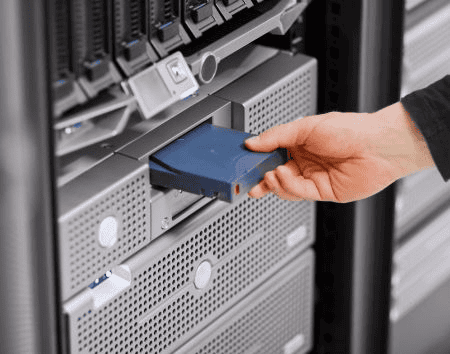3-Backup Strategy: Daily Backups, One Offsite Copy, and One Disconnected Immutable Backup
Adopt a 3-backup model for ransomware protection and business continuity
A resilient backup strategy isn’t optional anymore. The 3-backup model—a daily backup, one offsite copy, and one disconnected immutable backup—gives your business layered defence against ransomware, accidental deletion, and insider mistakes. With multiple, independent restore points, you can meet recovery time objectives (RTO), recovery point objectives (RPO), and maintain compliance without paying ransoms.
What is an immutable backup and how WORM storage blocks ransomware
An immutable backup is a write-once, read-many (WORM) copy that cannot be altered or deleted for a defined retention period. Even administrators can’t shorten or remove that lock. Because ransomware can’t encrypt or erase immutable data, you always retain a clean restore point. Immutability is available on modern object storage and purpose-built backup appliances, and it’s essential for audit trails, legal holds, and disaster recovery.
Protect backups with MFA and least-privilege access
Backups are the last line of defence—treat them like the crown jewels. Enforce multi-factor authentication (MFA) on your backup server, cloud storage, and identity provider. Combine MFA with role-based access control, segregation of duties (backup admins ≠ domain admins), and auditing so no single compromised credential can change retention, delete backups, or run destructive jobs. This hardens the entire backup chain, not just the storage.
Ransomware attack scenario: how daily, offsite, and immutable backups save the day
At 2:00 a.m., ransomware detonates and spreads across file shares and the on-premise backup repository.
-
Daily backup: last night’s local copy gets encrypted because the attacker reached the same network.
-
One offsite backup: a copy replicated to a separate cloud account stays safe; you can restore to new infrastructure.
-
One disconnected immutable backup: the gold copy—isolated and locked by immutability—remains untouched if attackers pivot into your cloud tenant.
This layered model cuts downtime, avoids ransom payments, and supports rapid incident response.
Why USB-attached server backups are insecure compared to offsite immutable storage
Rotating USB drives feels simple, but it’s risky: if the operating system can see the drive, so can malware. There’s no immutability, weak access control, and minimal auditability. Human error (leaving the drive connected), theft, or device failure can wipe out your only backup. Replacing USB rotation with offsite replication and immutable object storage removes these single points of failure and reduces your attack surface.
Keep up to 7 years of backups for leavers, deleted email, and breach investigations
Operational risk doesn’t end when an employee leaves. A month later you might discover they deleted a critical SharePoint folder or emptied their mailbox. If you disabled their account, you still need compliant access to historic data. Long-term retention—up to seven years, with sensible tiering—enables point-in-time recovery for audits, eDiscovery, and forensic investigations of slow-burn breaches that started months earlier. With layered retention (daily/weekly/monthly/yearly), you can restore exactly what you need without keeping everything on expensive hot storage.
How to implement a secure 3-backup strategy with strong retention
-
Daily backups: Application-aware jobs with verified restores; monitor for anomalies and failed jobs.
-
One offsite copy: Replicate to a separate provider or account with distinct credentials and enforced MFA.
-
One disconnected immutable backup: Enable object-lock/WORM or maintain an offline vault with a documented chain of custody.
-
Retention policy up to 7 years: Use tiered schedules and cost-efficient cold storage; document legal holds.
-
Access controls: Least privilege, dual-control for deletion/retention changes, and tamper-evident logs.
-
Recovery testing: Quarterly restore drills for critical systems; track RTO/RPO in reports for stakeholders.
Bottom line: A daily backup, one offsite copy, and one disconnected immutable backup—guarded by MFA and long-term data retention—turn backups into true cyber-resilience insurance.








